5 Verified Solutions To Resolve Your Projector Green Screen Issue
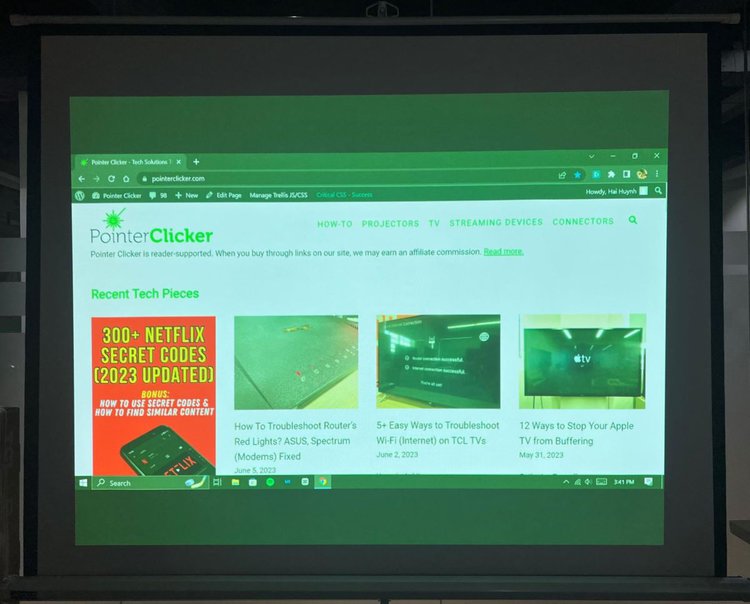
What To Know
- Ensure your video input source is functioning correctly to prevent green-tinted projections due to glitches.
- Address physical issues by inspecting your projector screen for green tints, checking VGA cables for damaged pins, and verifying projector color settings are appropriately calibrated.
- Damaged hardware components in the projector, like the DLP’s color wheel or the LCD’s green polarizer, can cause a persistent green hue, so it’s advisable to seek professional assistance if needed.
In this article, we will explore the possible causes and solutions to help you get rid of the green screen problem.
Whether you’re using a DLP or LCD projector, we’ve got you covered. So, let’s dive in and troubleshoot the issue!
Quick Navigation
1. The Video Input Is Corrupted With a Green Tint Glitch
Your projector operates by accurately reproducing the video input it receives from your laptop or computer, and any issues with this input can directly impact the projected image.
If the video input is corrupted or glitches with a green tint, your projector will faithfully replicate this, resulting in a green-tinted projected image.
Here is an example of what happens when I play a video file with a green tint on my Epson projector.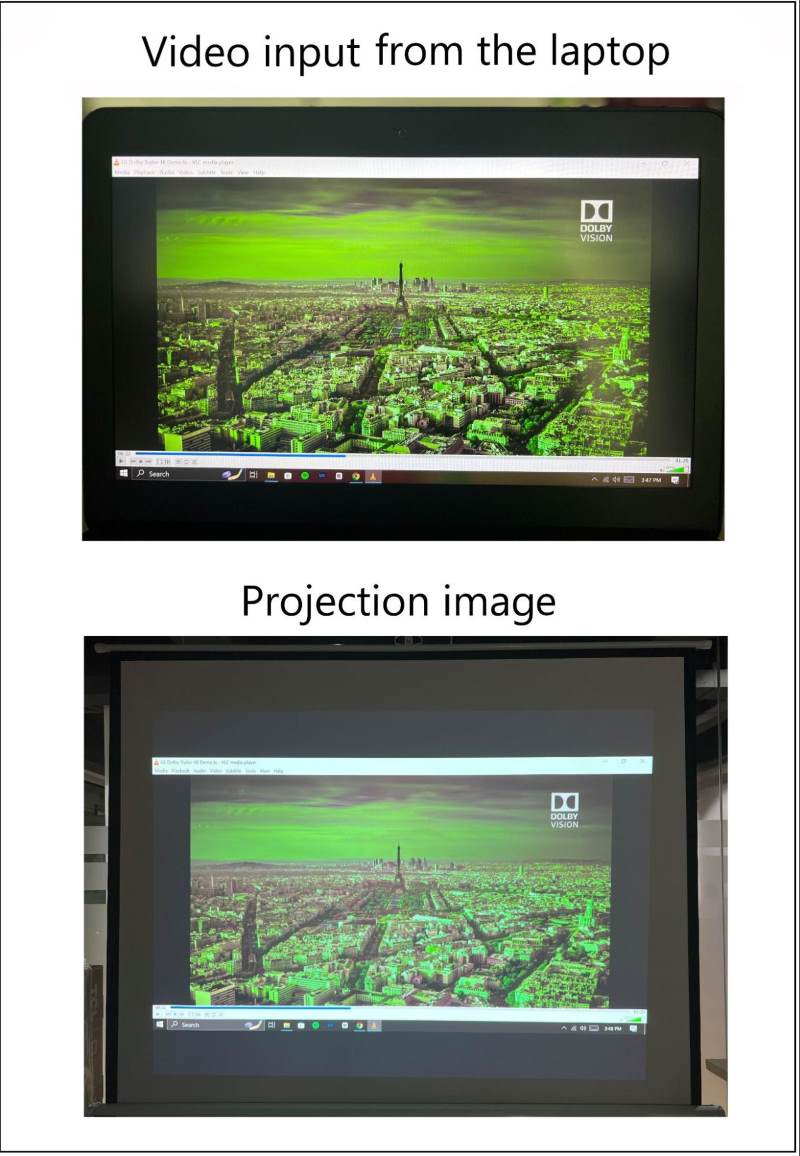
Before you start troubleshooting your projector, it’s essential to ensure that the video input source is functioning correctly.
Play a video file with a known color profile and check if the green tint persists. If your video input is the issue, your projector is likely in good health, and addressing the video glitch can solve the problem.
2. Green-Tinted Projector Screen
The screen onto which the projector beams its images plays a vital role in the final color output.
If your projector screen is tinged with green, it will naturally impact the colors of the projected image.
This phenomenon is similar to when a projector is used on a green wall. You can refer to our article for more information on this topic.
In case the screen seems to have a green layer, gently wipe it clean. If the green tint persists, consider investing in projector paint to transform your wall into a projector-friendly surface.
We have provided recommendations for the best projector paints, which you can learn more about here.
3. Damaged or Bent Pins in the VGA Cable
The VGA cable connecting your computer to the projector consists of 15 pins, with the first three pins responsible for transmitting the red, green, and blue video signals.
To help you imagine more easily, I drew a VGA pinout picture like the one below.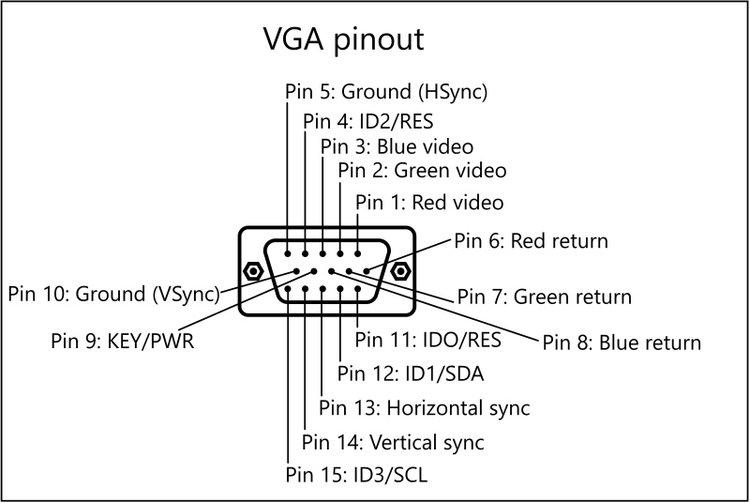
If any of these pins are damaged or bent, the projected image will be tinted in a color corresponding to these pins.
For instance, when the pins responsible for transmitting the red and blue signals are damaged, the projected image will appear green.
This problem, though not common, has been reported by many users.
To address this problem, it is important to inspect your VGA cable and check for any damaged or bent pins, especially pins one, two, and three in the VGA pinout picture above.
If you find any, consider replacing the VGA cable rather than trying to fix it. A new cable will provide a more lasting solution and peace of mind.
4. Incorrect Color Settings
Most projectors come with color settings that allow you to adjust the color of the projection images. If these settings are not correctly configured, it can result in a green tint.
Here is an example of using my Epson projector when the green tint setting is excessively adjusted. You can observe a green layer on the projection images.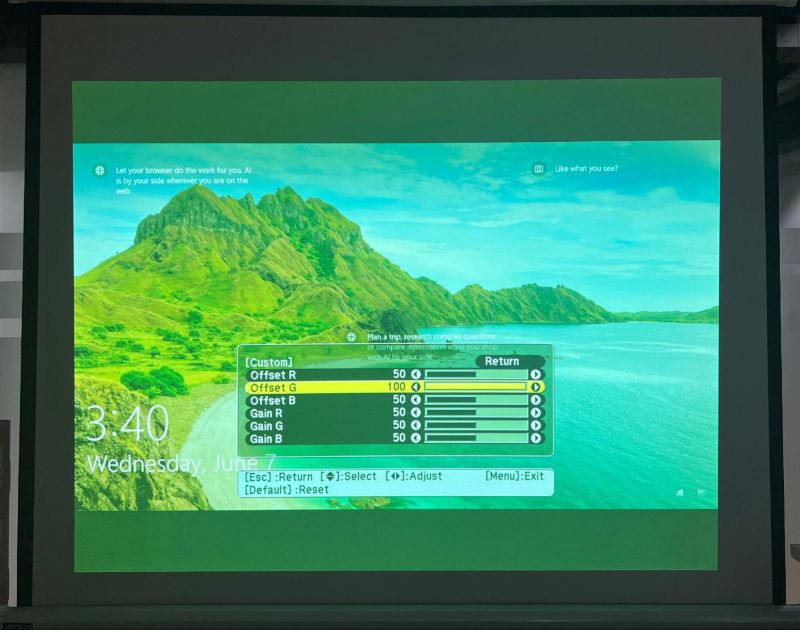
To resolve the green tint issue on an Epson projector, follow the instructions below. These principles can also be applied to other projector brands, or you may refer to the user manuals for specific guidance.
Step 1: Press the Menu button on the projector remote to access the Menu settings screen.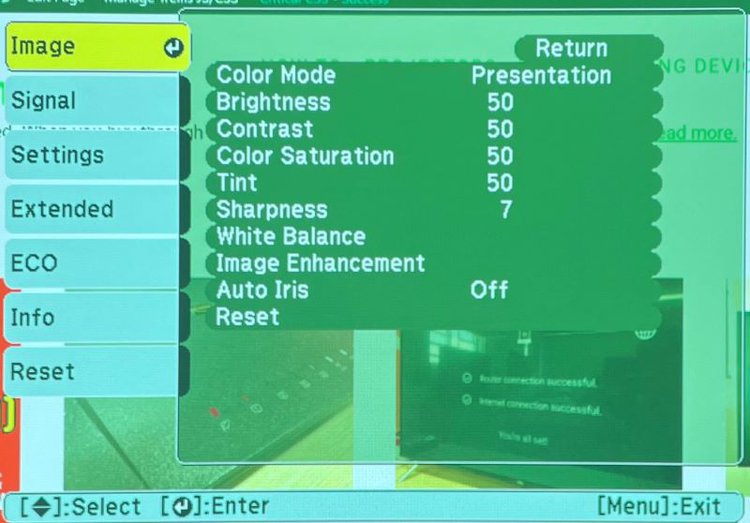
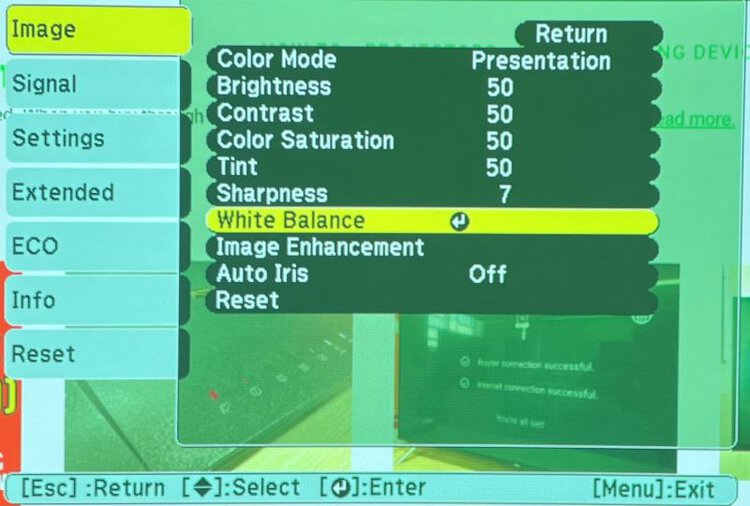
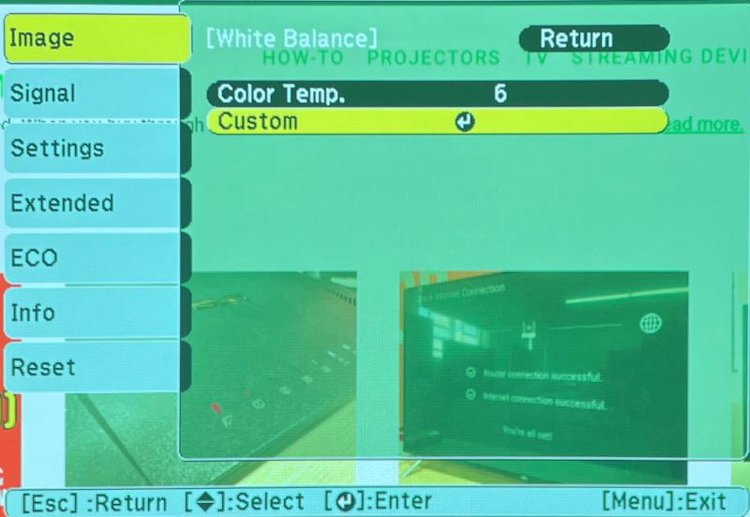
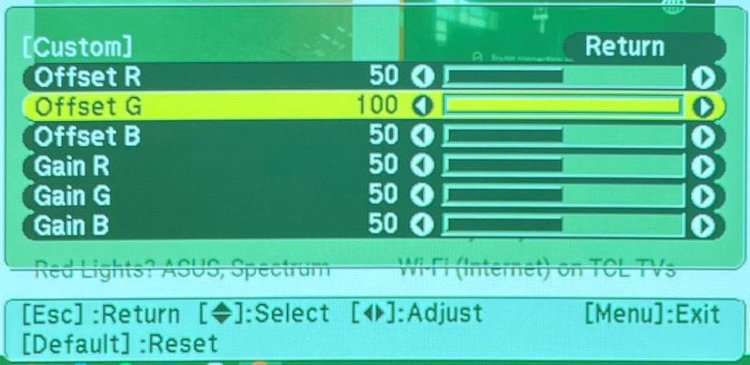
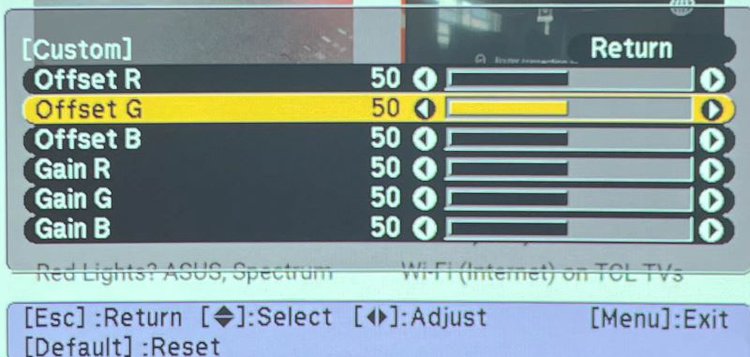
One other fast way is to reset all configurations:
Step 1: On the Menu settings screen, navigate to Reset, then select Reset All Config.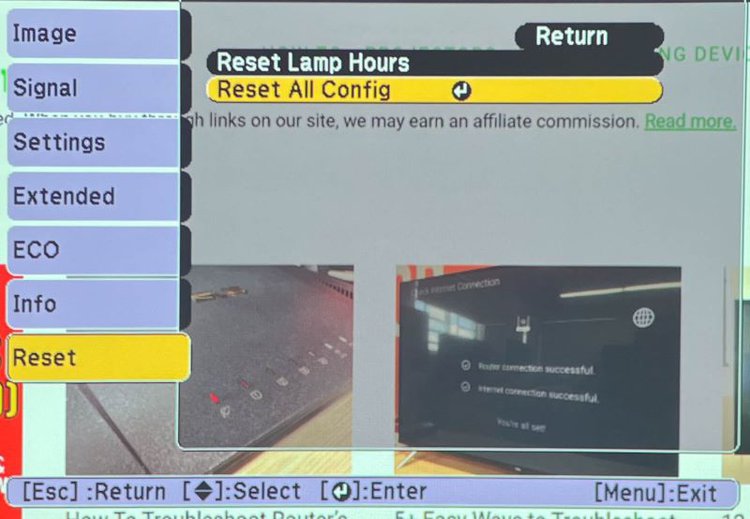

Additionally, I have a comprehensive guide on how to properly calibrate projectors, which you can read here to gain further insights.
5. Damaged Hardware
In the world of projectors, there are two main types: DLP (Digital Light Processing) and LCD (Liquid Crystal Display). Both these types use different mechanisms to project images, and a problem with either can result in a green tint.
DLP Projector’s Color Wheel
The color wheel is a vital component in a DLP projector’s color reproduction process.
To understand how the color wheel works, watch the below video:
If the color wheel is damaged, the projected images will display a tinted color, including a green tint.
You can attempt to replace the color wheel yourself by following the below DIY video:
However, I strongly recommend taking your DLP projector to a certified technician or contacting customer service, especially if the warranty is still valid.
LCD Projector’s Polarizer
In an LCD projector, a green tint can occur if the green polarizer is damaged or burnt out.
The polarizers in an LCD projector are key components involved in the color reproduction process.
Watch the below video to learn more about the polarizers in the LCD projector:
You can consult this DIY instruction to replace the damaged polarizer on your own.
Again, I highly advise you to have your LCD projector fixed by a professional, particularly if your projector is still under warranty.
Bonus: Green Tint Screen with HDMI-VGA Converter
When connecting your computer to an old projector using an HDMI-VGA converter, the resulting projected image might exhibit a green tint.
This occurrence arises due to the old projector’s lack of support for the modified signal, which undergoes digital-to-analog conversion via the HDMI-VGA converter.
If your old projector is equipped with a DVI input port, I highly advise you to employ an HDMI-DVI converter to connect the computer to the old projector.
Both HDMI and DVI utilize digital signals, eliminating the need for digital-to-analog conversion and preventing the green tint problem.
Alternatively, it may be time to upgrade your old projector to a newer projector that supports HDMI input, ensuring compatibility and avoiding such issues.
Final Thought
In conclusion, multiple factors can cause your projector to display a green tint, from issues with the video input or projector screen to problems with the VGA cable or hardware components.
By diagnosing the problem and applying the appropriate solution, you can restore your projector’s image color accuracy and enjoy clear, crisp projections once more.
Meet Vance. He’s a proud dad, a seasoned Electronics Engineer, and an avid tech lover. His proficiency in electronics and troubleshooting skills were instrumental in crafting Pointer Clicker. Vance is passionate about simplifying tech for those who aren’t well-versed in it.


well explained and simplified